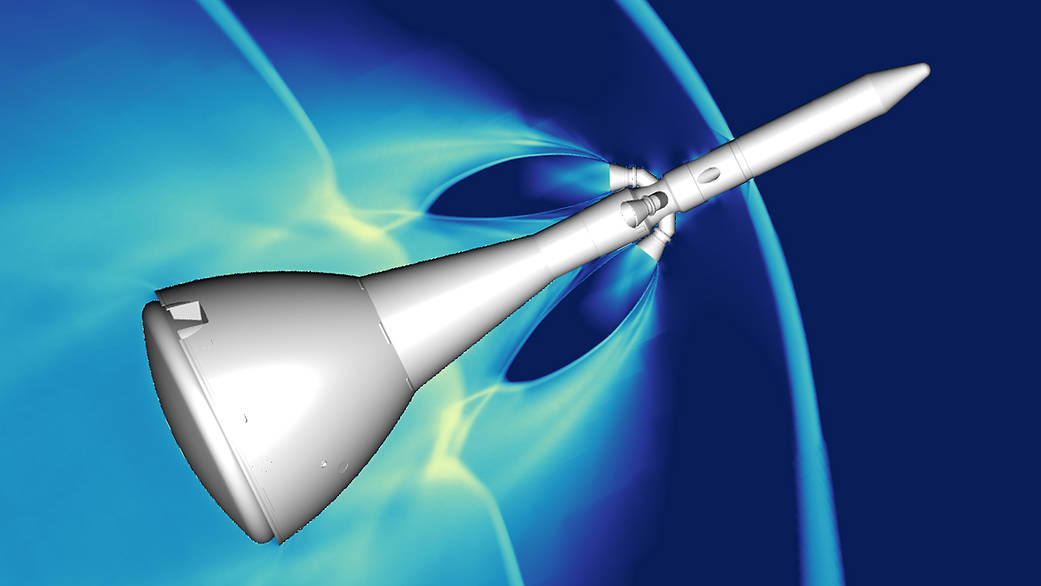As part of the Artemis program, NASA’s Orion spacecraft will carry the first woman and next man to lunar orbit before they land on the Moon in 2024, and enable sustained presence on and around the Moon by the end of the decade. An integral part of ensuring safe spaceflight is Orion’s Launch Abort System, or LAS, shown here in gray. This state-of-the-art crew escape system is attached to the top of the spacecraft, which sits atop the agency’s powerful Space Launch System rocket. In case of emergency during takeoff, it can quickly separate from the speeding rocket and pull astronauts to safety.
To propel Orion away to safety, the LAS uses an abort motor that produces four large, high-speed exhaust plumes that flow along the sides of Orion, generating extremely strong vibrations.
This image is computed using 5,000 snapshots from the longest LAS simulation yet and is rendered by the visualization experts in the NASA Advanced Supercomputing Division at NASA’s Ames Research Center in California’s Silicon Valley. It provides an in-depth look at the predicted average fluctuations in pressure that cause vibrations on the spacecraft.
High levels of vibration are shown in white; low levels are in blue. A light blue arc upstream from the abort motor nozzles shows a shock wave created by the vehicle’s abort motor nozzles and exhaust plumes when the vehicle travels faster than the speed of sound. The white curves downstream of the nozzles are due to interactions between another shock and the plumes.
To better understand the effects of altitude and velocity on the strength and distribution of these vibrations, a team at Ames produced multiple simulations across a wide range of launch abort scenarios using NASA’s supercomputing resources. They are working to simulate the full-stress test of the LAS, called the Ascent Abort-2 flight test, which NASA successfully completed in 2019. Using cutting-edge Ames-developed software, engineers validated the accuracy of predictions with actual flight test data. In collaboration with the Orion Loads and Dynamics team at NASA’s Johnson Space Center in Houston, the predictions will be used to augment wind-tunnel, ground-test, and flight-test data to help reduce uncertainty of the vibrations on the spacecraft, and ultimately enhance the safety of astronauts during a potential launch abort.
Image credit: NASA/Francois Cadieux/Timothy Sandstrom
NASA is showcasing 35 of the agency’s exciting computational achievements in its research exhibit at SC20, the international supercomputing conference, Nov. 17-19, 2020. The conference is virtual this year. For more technical information, visit: www.nas.nasa.gov/SC20
For news media:
Members of the news media interested in covering this topic should reach out to the NASA Ames newsroom.

























